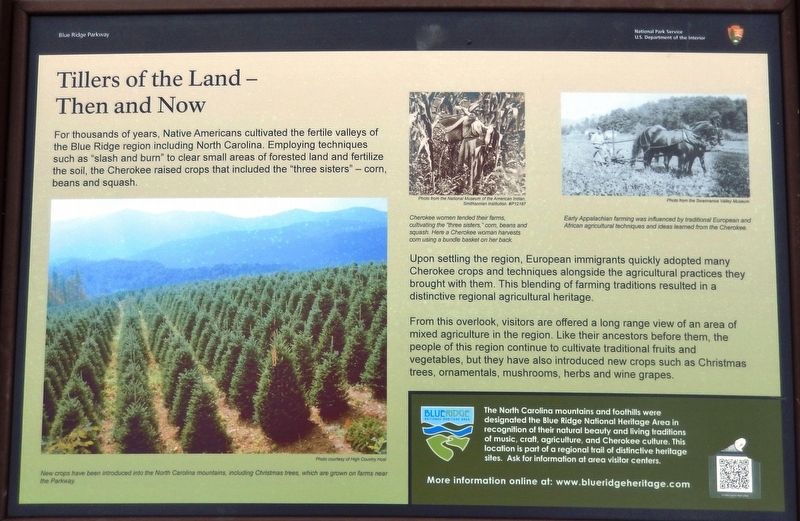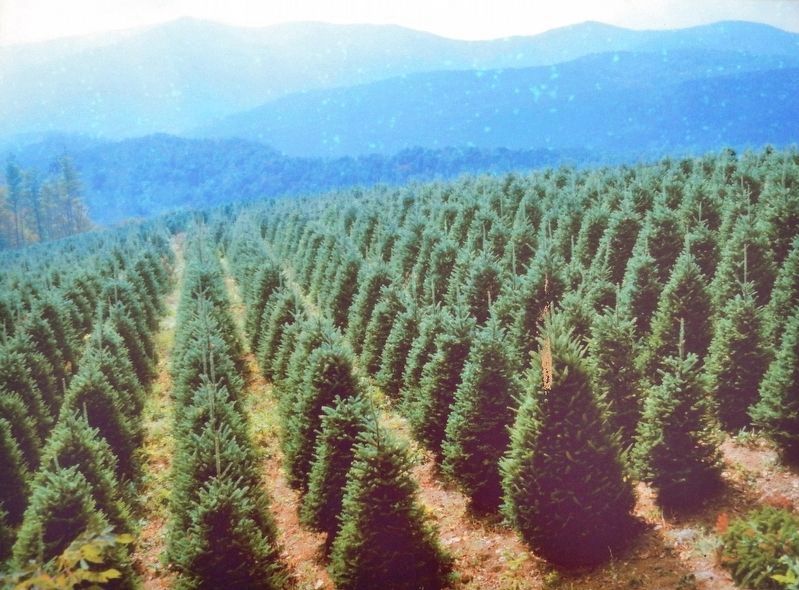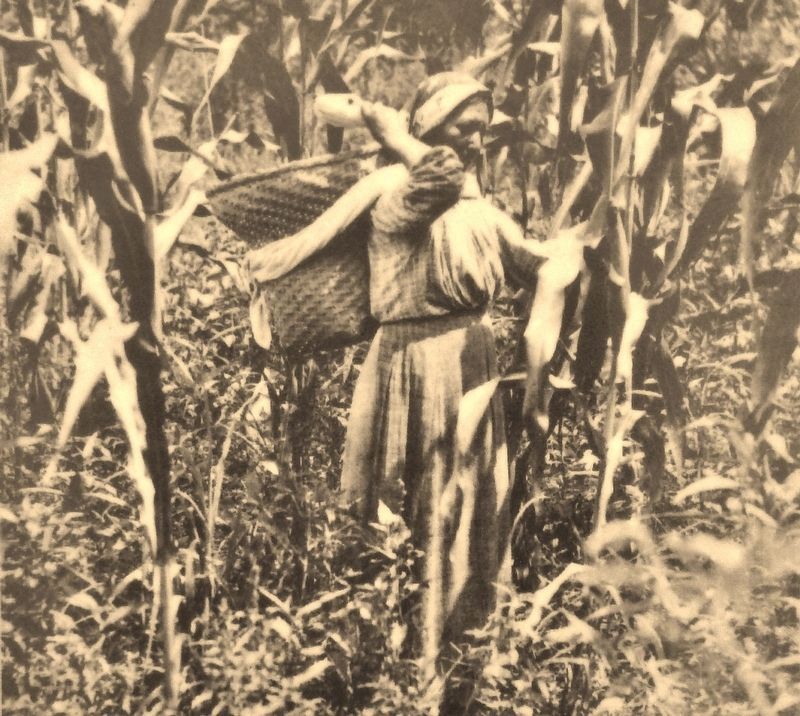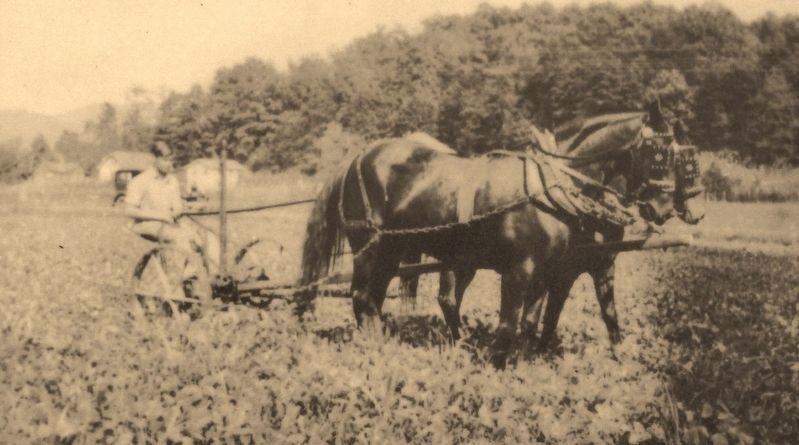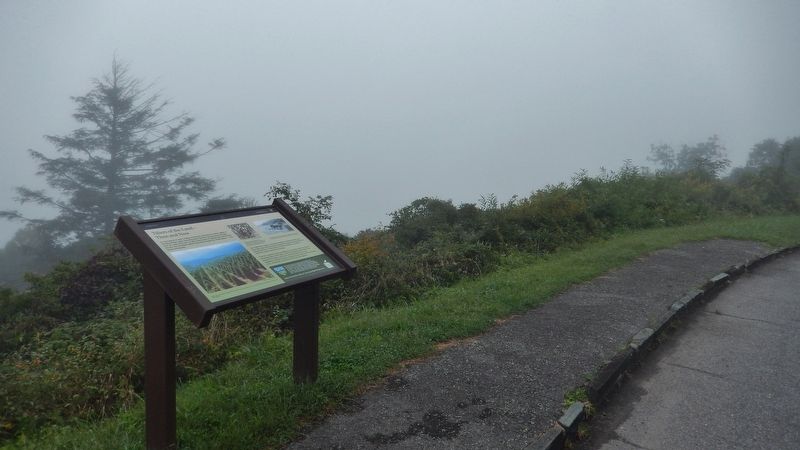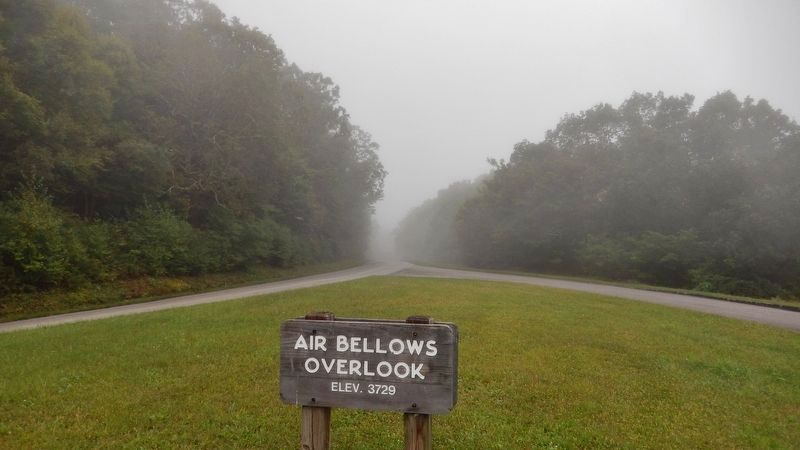Near Sparta in Alleghany County, North Carolina — The American South (South Atlantic)
Tillers of the Land - Then and Now
Blue Ridge Parkway
Upon settling the region, European immigrants quickly adopted many Cherokee crops and techniques alongside the agricultural practices they brought with them. This blending of farming traditions resulted in a distinctive regional agricultural heritage.
From this overlook, visitors are offered a long range view of an area of mixed agriculture in the region. Like their ancestors before them, the people of this region continue to cultivate traditional fruits and vegetables, but they have also introduced new crops such as Christmas trees, ornamentals, mushrooms, herbs and wine grapes.
The North Carolina mountains and foothills were designated the Blue Ridge National Heritage Area in recognition of their natural beauty and living traditions of music, craft, agriculture, and Cherokee culture. This location is part of a regional trail of distinctive heritage sites. Ask for more information at area visitor centers.
Erected by National Park Service, U.S. Department of the Interior.
Topics and series. This historical marker is listed in these topic lists: Agriculture • Horticulture & Forestry • Native Americans • Settlements & Settlers. In addition, it is included in the Blue Ridge Parkway series list.
Location. 36° 25.832′ N, 81° 7.355′ W. Marker is near Sparta, North Carolina, in Alleghany County. Marker is on Blue Ridge Parkway (at milepost 236.9), on the right when traveling south. Marker is located at the Air Bellows Overlook pull-out. Touch for map. Marker is in this post office area: Sparta NC 28675, United States of America. Touch for directions.
Other nearby markers. At least 8 other markers are within 3 miles of this marker, measured as the crow flies. A Mountain Home (approx. 1˝ miles away); Brinegar Cabin (approx. 1˝ miles away); Making Linsey-Woolsey (approx. 1˝ miles away); Making Shoes (approx. 1˝ miles away); Mountain Spring (approx. 1˝ miles away); An Outdoor Pantry (approx. 1˝ miles away); The Brinegar Family (approx. 1˝ miles away); Robert Lee Doughton (approx. 2.9 miles away).
Related markers. Click here for a list of markers that are related to this marker. Blue Ridge Heritage Trail
Also see . . .
1. Air Bellows Gap, Blue Ridge Parkway. Today, the North Carolina Christmas tree
industry is ranked second in the nation for Christmas tree sales annually and produces over 20% of the live Christmas trees grown in the United States. Fraser Fir trees represent over 95% of all species grown in North Carolina. NC Fraser firs have been selected 12 times for display in the Blue Room of the White House. Numerous “Choose ‘N Cut” tree farms are nearby. (Submitted on September 9, 2018, by Cosmos Mariner of Cape Canaveral, Florida.)
2. Cherokee Agriculture. The beginning of Cherokee culture is identified with the cultivation of corn by the native people in the Southern Appalachians more than a thousand years ago. From the earliest times in Cherokee history, the raising of corn was interwoven with the spiritual beliefs of the people. Cherokee villages were surrounded by vast cornfields while gardens were planted beside rivers and streams. In addition to corn, the Cherokee grew beans, squash, sunflowers, pumpkins, and other crops. Cherokee women were the primary farmers. “The Three Sisters” were staples in the Cherokee diet–corn, beans and squash. (Submitted on September 10, 2018, by Cosmos Mariner of Cape Canaveral, Florida.)
Credits. This page was last revised on September 18, 2018. It was originally submitted on September 9, 2018, by Cosmos Mariner of Cape Canaveral, Florida. This page has been viewed 286 times since then and 37 times this year. Last updated on September 13, 2018, by Cosmos Mariner of Cape Canaveral, Florida. Photos: 1. submitted on September 9, 2018, by Cosmos Mariner of Cape Canaveral, Florida. 2, 3, 4, 5, 6. submitted on September 10, 2018, by Cosmos Mariner of Cape Canaveral, Florida. • Bill Pfingsten was the editor who published this page.
